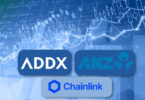Yesterday the World Economic Forum (WEF) published a white paper on blockchain interoperability written in collaboration with Deloitte.
The paper starts off exploring the need for interoperability, such as a blockchain with a narrow use case, perhaps for bills of lading, which needs to interoperate with a broader supply chain blockchain. Typically most supply chain blockchains need to support insurance and trade finance and hence potentially be interoperable with blockchains offering these services.
Interoperability is one of those terms that has a broad meaning. Typically, blockchains interoperate with legacy systems, although these integrations usually use application programming interfaces (APIs). Additionally, smart contracts often access external data or feeds, and these are referred to as oracles.
Blockchain interoperability refers to two separate blockchain networks talking to each other. That can happen using APIs, but this is viewed as sub-optimal. And there are two kinds of interoperability.
One involves exchanging digital assets, so perhaps exchanging some digital stock for digital currency. The ability to make this exchange instantly is usually referred to as an atomic swap. It has numerous advantages because the payment risk disappears, and many central counterparties exist to address these payment risks.
The other kind of blockchain interoperability is to exchange data. This typically happens with supply chain and insurance.
Interoperability is a lot more than technical integration
Blockchain interoperability is often viewed as a technical challenge, but there’s a lot more to it than that. The WEF divides into the Business, the Platform, and the Infrastructure.
The business aspect encompasses the governance of the blockchain and trust between the two networks, as well as data standardization. To share data, it has to be standardized. But often this homogeneity is focused within a single network as opposed to across networks. Other business aspects include incentives and the legal framework, which can be a bigger challenge across jurisdictions.
The platform refers to the blockchain protocol, consensus mechanism, smart contract languages, and how users are authorized and permissioned. And the infrastructure looks at the hosting of servers in hybrid clouds, managed blockchains, and whether there are potentially proprietary components that might hinder interoperability.
Different projects that implement interoperability are explored, mostly for public blockchains, include the well-known projects Cosmos and Polkadot. For enterprise blockchain, the WEF referred to Hyperledger Quilt, the open source implementation of Ripple’s Interledger, as well as the Corda Settler.
No paper can cover every relevant project out there, but it’s worth highlighting three that were omitted and are relevant to the enterprise blockchain community. Firstly, Hyperledger has a new early stage Labs project initiated by Accenture called the Blockchain Integration Framework (BIF). It currently enables the exchange of on-chain data or assets between Hyperledger Fabric, Quorum and R3’s Corda.
Another that is more focused on exchanging currencies or digital assets is ION from Clearmatics, the developer behind the Utility Settlement Coin / Fnality, backed by several of the world’s biggest banks. And there’s also Quant’s Overledger.
This is the latest blockchain paper from the WEF. Previous ones have included how to measure blockchain’s value, how to choose between private and public blockchains, and exploring blockchain deployment challenges based on the UAE’s extensive experience.
The organization also initiative a blockchain consortium for the metals and mining sector and a traceability platform for sustainability.






